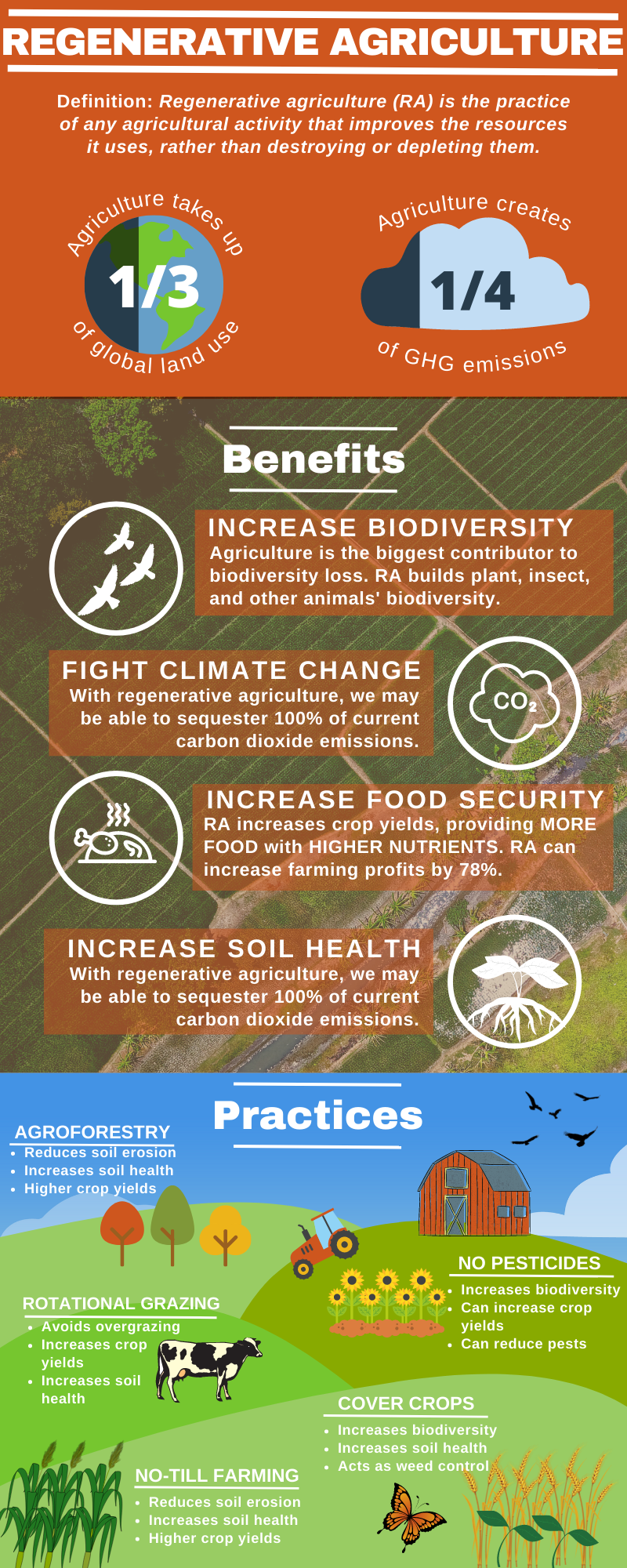Regenerative agriculture is a method of growing food or livestock that is not only less destructive than conventional agriculture, but is also capable of mitigating climate change. As populations grow and farmable land becomes scarcer, regenerative agriculture represents a promising strategy to avoid widespread food scarcity.
Get the basics from this regenerative agriculture infographic, or explore the site for more details.

Benefits of Regenerative Agriculture
The regenerative agriculture infographic above highlights four of the most important benefits of regenerative agriculture, both to people and the environment.
- Regenerative agriculture increases biodiversity: RA helps prevent biodiversity loss, or the loss of diversity of life on Earth. This is because RA increases the health of the land overall, and provides habitats that help preserve a wider array of species. Regenerative agriculture practices that increase biodiversity include:
- Planting a diverse array of crops (avoiding monocrops)
- Planting diverse cover crops (crops grown among cash crops)
- Rotational grazing (moving grazing animals around systematically to avoid overgrazing, giving land time to rest)
- Agroforestry (growing trees among crops)
- Regenerative agriculture fights climate change: RA helps mitigate climate change by increasing the ability of soil to store carbon. RA also encourages the planting of trees, which store carbon. Finally, RA allows farmers to use land more efficiently by increasing crop yields, which means less land must be devoted to agriculture, which leads to less deforestation generally.
- Regenerative agriculture increases food security: Global demand for food is ever-increasing, but growing populations, climate change degrading land, land scarcity are making it difficult to meet the demand. RA works to increase soil health to increase food production, and allows farmers to produce food that is more nutrient-dense and pest resistant.
- Regenerative agriculture increases soil health: RA works to increase soil health through practices like no-till farming, rotational grazing, and cover cropping. Healthy soils are important for:
- Sequestering carbon
- Increasing crop yields
- Reducing erosion
- Increasing microbe biodiversity
- Increasing nutrient cycling
Read more about regenerative agriculture practices, their benefits, and regenerative agriculture in action today in our comprehensive Guide to Regenerative Agriculture.